Crumbling mud brick walls come into view with a scattering of green – Date palms and other desert foliage give visual relief to the stark forms of red, brown and black hills we have been winding through all the way. More dilapidated structures in mud brick amidst new concrete construction, come into view and heighten our curiosity. “It’s not a safe place”, “there may be ghosts there”, “There is nothing there!!” – were some of the reactions we had when we expressed our intent to visit, what is considered one of the 10 most haunted cities in the world, by National Geographic. With a similar reputation in Oman – this is Bahla town – located 200 km from Muscat.
The Arabian peninsula has always fascinated me, knowing that early humans walked along its coast in the first human migration, out of Africa maybe 60000 years ago. This is from where early humans crossed over to central Asia and India. What must the landscape have been then? How did they live and form communities and then how did some move on? Not much evidence remains of dwellings in Oman, and the earliest ones date back to the 12th century. Oman which lies on the east and south of the Arabian peninsula, has a rich and varied history. With a long coastline and a few natural harbours, it has been on the global trade route since the beginning of trade. It’s barren rocky hills and outcrops of land in varying hues of red, brown and black wrap around the inner desert, forming aqua blue alcoves when letting the sea in.
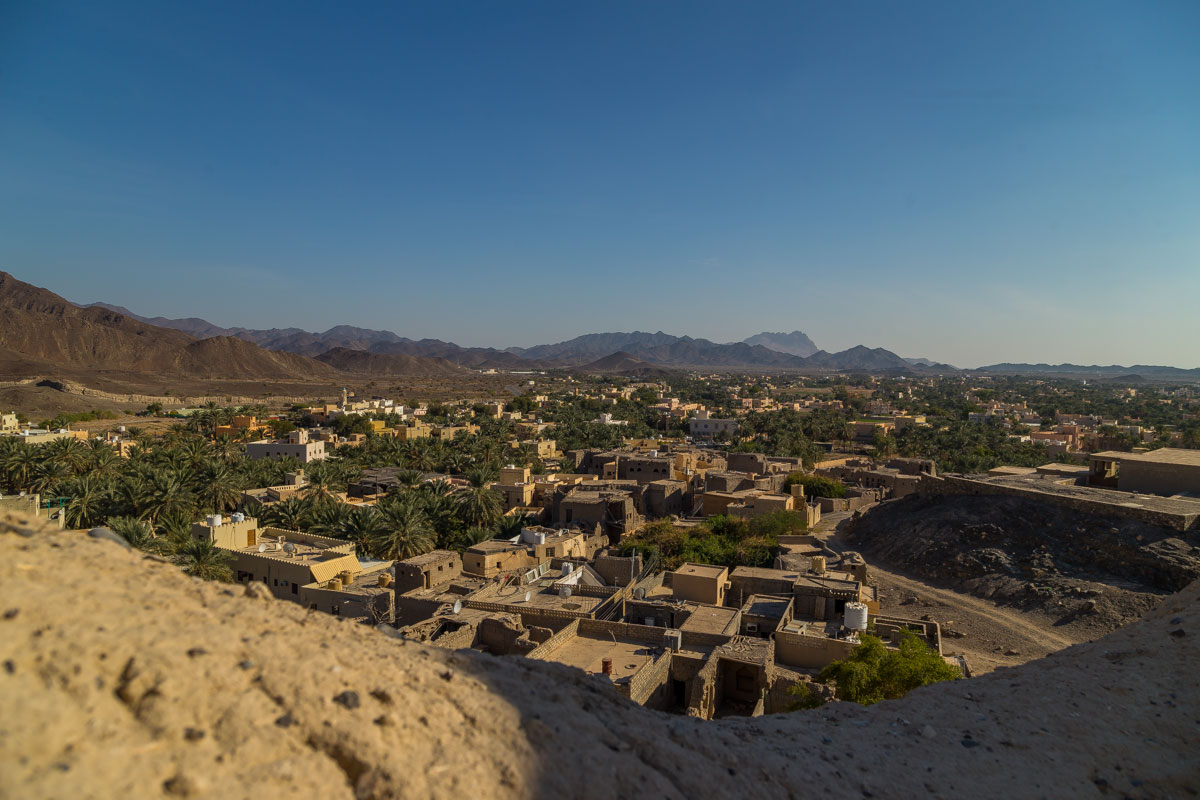
Blue- green jewel like Wadis which are underground water sources, give life to the otherwise desert landscape. These wadis have a very advanced water distribution system, called Aflaj. The Aflaj date back to almost 5000 years. Most traditional habitation grew in and around these Wadis, dense and clustered housing, to be safe from the harsh natural environment, and to share the scarce resources. Bahla is an example of one such settlement. It’s geographical location, made it important in the trade route for frankincense. Built during the time of the Banu Nebhan tribe, who were in power from the 12th to the 15th century. Archeological excavations from the site, show that Bahla was already settled during the 3rd millennium BC and was part of the Magan civilsation then.
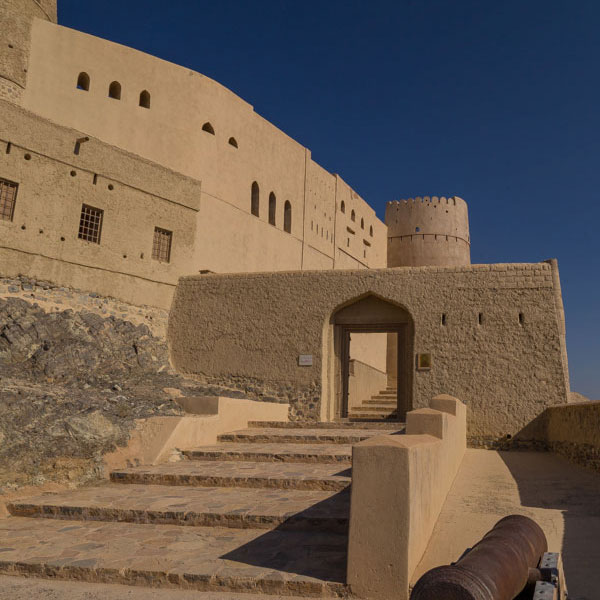

The fort wall takes on a more articulate form, it’s brown- ochre fortification contrasting with the azure blue sky. Rising from the ruins is the restored fort, entered through a small gateway, it’s massive form is contradicted by the human scale of the entrance courtyard. The castellated wall on the left, has steps leading up to it, and another set of steps lead to a mysterious room, with a hole in the floor, and one can see the ground – way below!! We deliberate if this was the toilet of old. These kind of speculations over the nature of the spaces become the theme of our visit here, as not much is explained or probably known about the place.
The entrance hall with its recessed seating and decorated ceiling lead us into a larger courtyard which is flanked by a group structures with no seeming organisation. One of them is labelled as a mosque, another tower like structure – the Casbah and the rest look like dwellings.
Steps dramatically lead up to the turrets, through which we get a magnificent view of the surrounding. These were probably used for defence. The rest of the structures around are a labyrinth of rooms, at different levels, mostly low in height, and all interconnected- through stairs, passages and other rooms. One can move within each group of structures, without needing to come out. This is quite a relief, as even in winter, the sun is scorching.
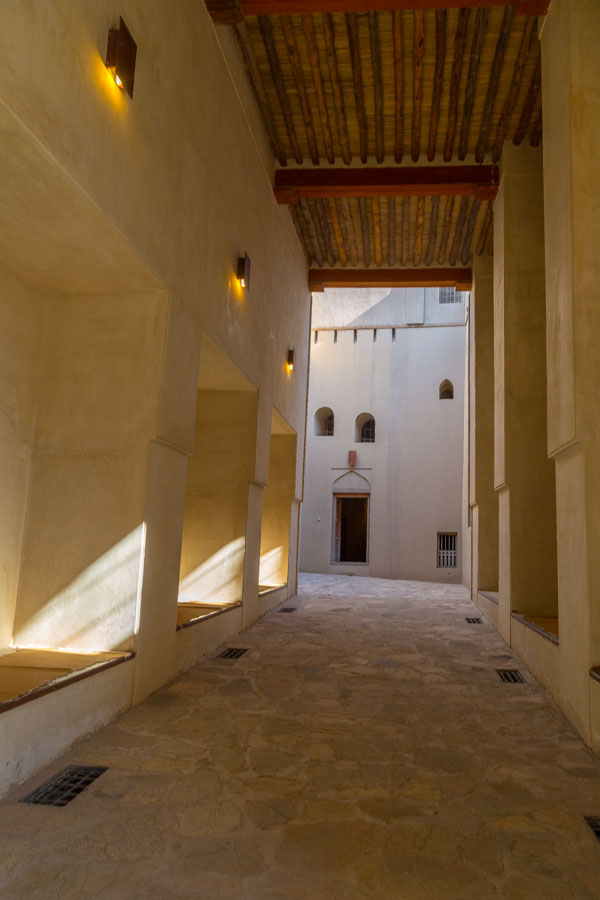
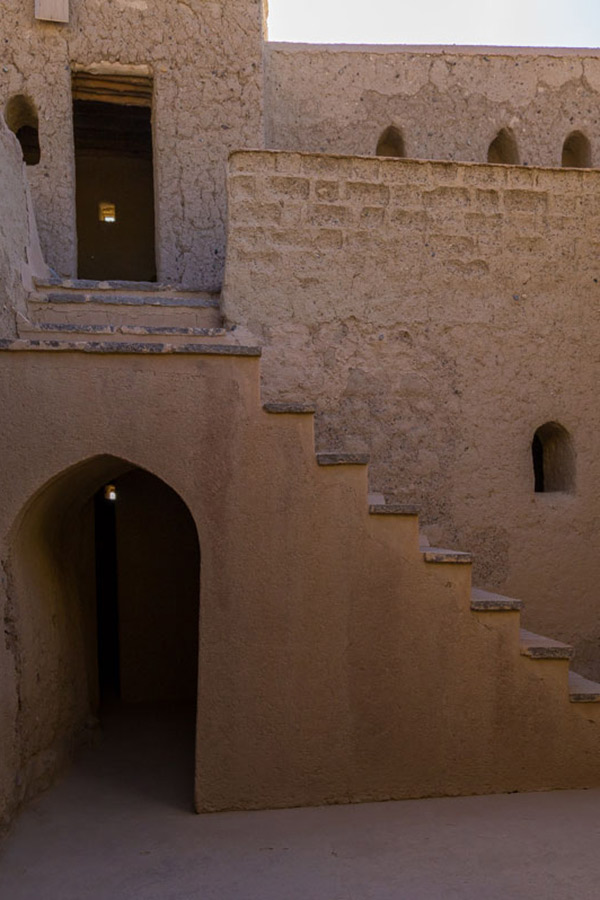
The rooms are cosy, niches on the walls with wooden shelves, small windows that diffuse the amount of light and soft mud walls, make the spaces very comfortable. The windows are placed just a little above the ground and vents at higher levels ensure adequate circulation of air. Troughs built into the floor in mud and circular shafts that go through the structure appear at occasional intervals. One can imagine, that these were the wells that one could draw water from, and the troughs were for bathing. The large organic courtyard in the middle,could also be assumed to shelter the people living in all the homes around, in time of conflict.
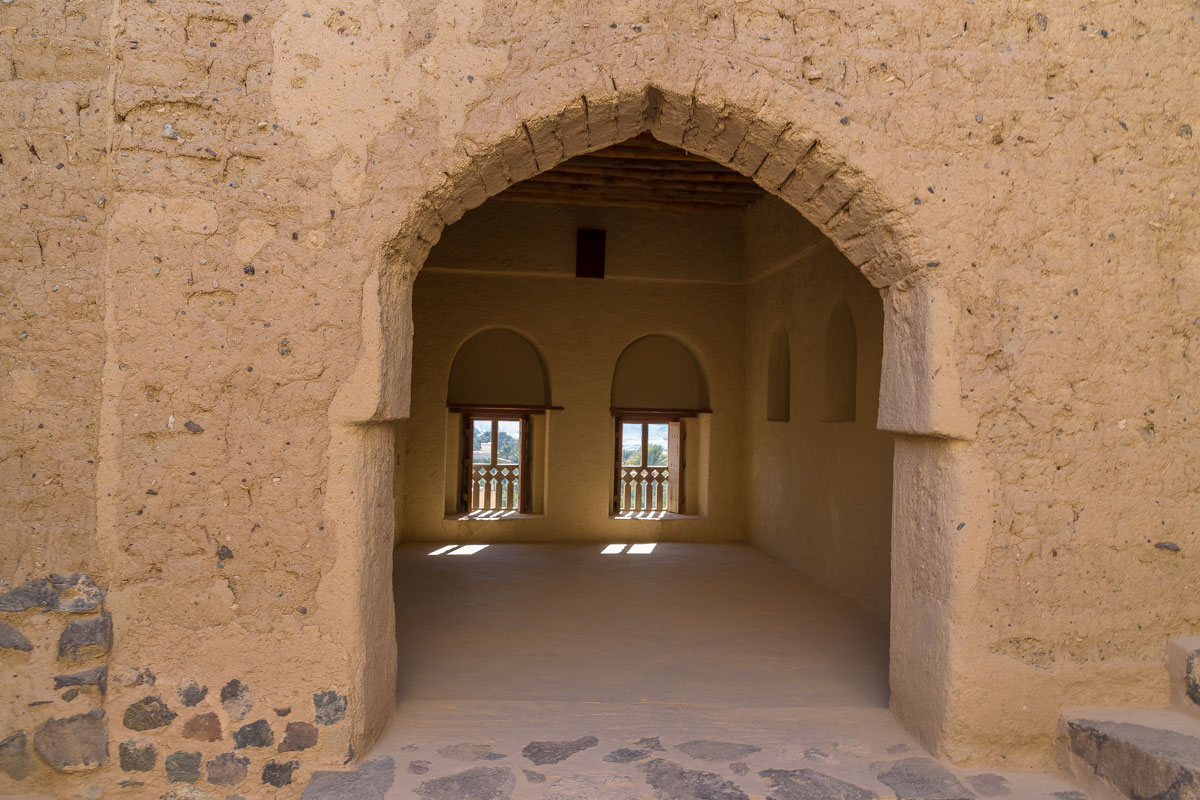
Bahla fort is a UNESCO protected fort since 1987 and restoration has been ongoing since 1995. The restoration is incomplete, with the village and the mosque still in ruins. The souk has lost most of its earlier character, but is mostly deserted, due to the presence of a tree that is supposed to have occult powers. While not much is known about the fort and the life in it, from the experience of the architecture, one can assume that the builders then were very sensitive to the climate, and the spaces are climatically conducive to the harsh desert environment. They also must have been clever engineers, from the presence of wells within the structures- a precursor to modern plumbing? The intricate planning and design are good sources as case studies for designing modern housing and settlements, that respond to climate and culture. And the water systems, as a valuable asset for a world that is going to see water wars. While architecture in modern Oman has been true to its context, culturally, thanks to the vision of its Sultan, however, the planning of towns has been spread out and are completely car dependent. The total disregard for energy consumption is reflected in the cities, and has changed the character of the community. With oil in Oman expected to last only for the next 25 years, looking at past spaces and how they were designed to sustain, will become of utmost importance.




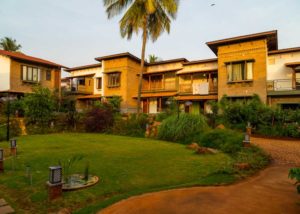
👌🏽Interesting and informative
What an experience it must have been to walk through the structure and imagining the stories it holds. Thanks for sharing!!